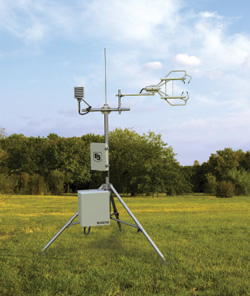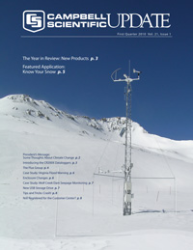Interest in the quantification at the ecosystem level of fluxes in carbon dioxide, water vapor, and energy has increased in recent years due to increased interest in global carbon and hydrologic cycles. At Campbell Scientific, the goal of the Micrometeorology Flux group is to help scientists around the world measure these various fluxes. 
Eddy covariance (EC) is frequently used to measure fluxes. EC is an atmospheric flux measurement technique used to measure and calculate vertical turbulent fluxes within atmospheric boundary layers. These flux measurements are widely used to estimate heat, water, and carbon dioxide exchange, as well as the exchange of methane and other trace gases. The EC technique is also used extensively for verification and parameterization of local, regional, and global models of climate, weather, biogeochemistry, and ecology.
EC measurements require high precision, high-frequency response, and large data-storage capacity. Campbell Scientific dataloggers and sensors meet these requirements.
Campbell Scientific offers both standard and extended open-path eddy-covariance (OPEC) systems. The standard system consists of:
- Flux-suitable datalogger
- 3-D sonic anemometer
- Open-path infrared gas analyzer
- Temperature and relative humidity probe
The extended OPEC system includes additional sensors for energy-balance measurements. By examining the energy-balance closure, it is possible to evaluate how well the EC data were estimated. These additional sensors include the following:
- One net-radiation sensor
- Two averaging soil thermocouples
- Two water-content reflectometers
- Four soil heat-flux plates
The EC technique is mathematically complex and requires significant care in setting up the instruments and in processing the data. Application engineers from the Flux group help customers work through these complexities. They consult on solution design and help select the system and sensors that best fit the site and measurement requirements. Some of them support customers by phone, on line, and in person; others work in research and as application scientists. They write datalogger software programs and maintain libraries of programs. These engineers also teach the training classes that cover both of our OPEC systems. Eddy-covariance training courses are listed at www.campbellsci.com/training.
Campbell Scientific’s Micrometeorology Flux group has engineers with advanced degrees and many years of experience. They are promoting this very specialized branch of science with cutting-edge engineering, development, and applications. If you have any questions relating to flux measurements, don’t hesitate to contact a member of this group.

